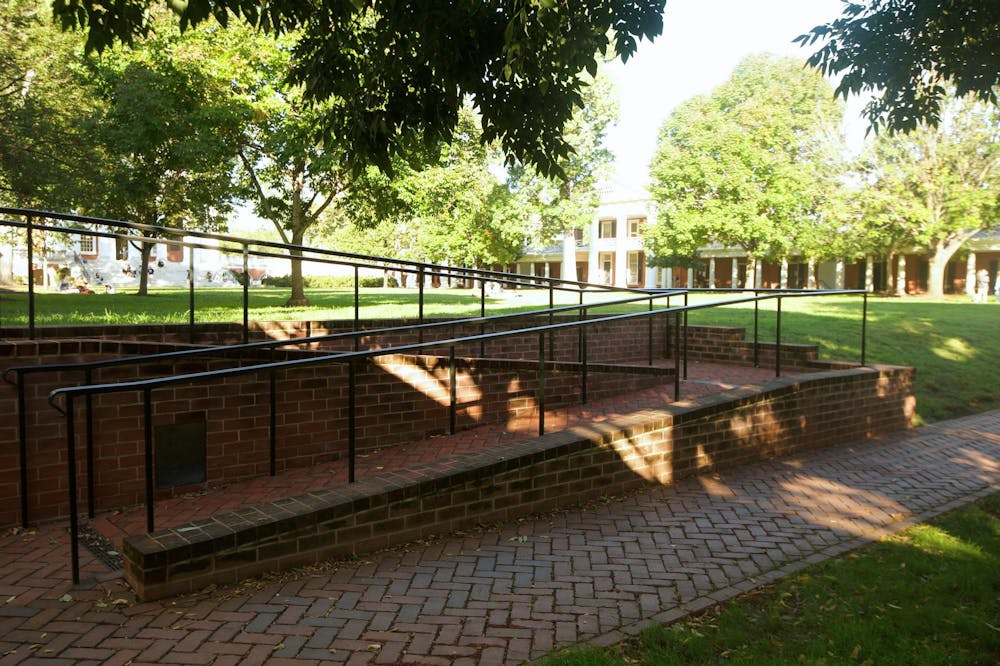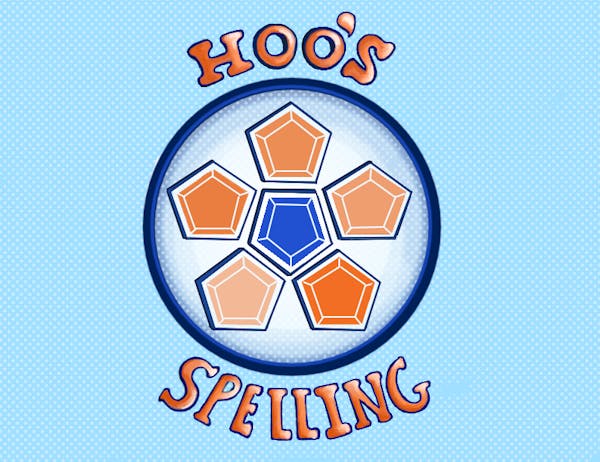The University’s scenic hills and dispersed buildings make it a beautiful place to live and learn, but they also pose an accessibility challenge. Despite efforts by the Student Disability Access Center to provide housing, navigation and transportation resources for mobility-impaired students, the sheer scale and structure of the University can make it difficult to get around. So when a disability or injury restricts students’ movement, the reality of traversing Grounds becomes a thorny — but pressing — issue.
Between heading to class, grabbing meals and swinging by dorms, the daily life of a University student features no shortage of movement. And with packed sidewalks, buildings separated by stairwells and class transition times as short as 10 minutes, maneuvering around Grounds is no easy feat.
Few are more familiar with this fact than first-year College student Siddarth Dhawan. While his peers fretted about decorating their dorms and making new friends, Dhawan, a part-time wheelchair user, spent the summer reaching out to SDAC to ensure his needs were met. Prior to arriving on Grounds, he filled out an application regarding his disability and was paired with an SDAC advisor to discuss his arrangements.
But this discussion did not stop once he arrived in Charlottesville. For Dhawan, the accommodations process is collaborative and ongoing, and he continues to modify his needs as the semester presents new challenges.
“Unless you actually go to college and have the experience, you won’t know all the accommodations you need,” Dhawan said.
The University offers a variety of resources to help disabled students, including housing accommodations, adjusted classroom locations, a map of accessible paths and free rides on the University Transit System and Charlottesville City Bus. According to SDAC, “accommodations are determined case by case” and can vary in length and scope, serving as either temporary crutches or long-term assistance.
Despite all the University’s options, it can be difficult for disabled students to conceptualize what a reasonable accommodation looks like. Second-year Engineering student Makayla Adams, a full-time wheelchair user, recalled being unsure what services the University could provide.
“I remember kind of being really confused on what was an appropriate thing to ask for, and what was kind of like ‘You’re asking for too much,’” Adams said. “I wasn’t really sure what I was allowed to ask for.”
Adams remedied this uncertainty by simply stating her needs and seeing what SDAC could do. After working with her advisor and describing her unique requirements, Adams was able to get accommodations that worked for her, including extra excused absences for poor weather because her wheelchair is not waterproof.
While accessibility is a constant consideration for Adams and Dhawan, other students unexpectedly find themselves in need of accommodations. This was the case for second-year College student Maddy Brouillette after she ruptured her Achilles during a preseason cheerleading practice just days before classes began. Now relegated to a knee scooter and crutches, Brouillette is uncovering the many challenges of life with a leg injury.
“I didn’t realize how much I take walking for granted,” Brouillette said.
After suffering her injury, Brouillette applied for SDAC accommodations on the recommendation of a friend, receiving special seating in classes and extensions on assignments as she recovered from surgery. Brouillette found the application process simple and helpful, but she shared that it has been difficult to ensure her requests are heeded by her professors.
“Getting accommodations into the [SDAC] portal itself was pretty easy. Knowing whether or not my professors really looked at that was a little different, and a little bit more difficult.” Brouillette said. “The accommodated seating wasn’t something I got very much.”
Second-year College student Isabella DeMark had a similarly straightforward SDAC experience as she sought accommodations when a broken leg forced her out of her room in Gooch-Dillard during the Spring 2025 semester.
As can be the case in University housing, from the motel dorms to Lambeth Apartments, DeMark’s suite in Gooch lacked an elevator. Unable to navigate the long walk or steps up to her Gooch-Dillard dorm on crutches, DeMark filed for housing accommodations before she returned to Grounds. She said that SDAC immediately moved her into the first floor of Metcalf so she would have easier access to her room.
“SDAC is very nice,” DeMark said. “They were very easy to work with. They helped a lot with getting housing on time, because the housing process can be a bit longer."
Aside from housing, mobility impaired students also have to deal with the constant challenge that is physically navigating Grounds. While UTS buses offer one option for transportation, students, particularly those who can not mount buses or access stops due to their disability, can also use University’s Demand and Response Transportation.
DART is a taxi-like service, taking students three-quarters of a mile beyond UTS bus routes. Students using DART can send their weekly schedule to SDAC to schedule recurring rides, However, on-demand rides often take upwards of 45 minutes, and according to Adams, DART does not always fit the needs of disabled students.
“I was recommended DART to use,” Adams said. “But then when I needed it, and I started looking into it, I realized that it’s not actually wheelchair accessible.”
Without a reliable transportation service, some disabled students opt to get around on their own. This often requires extra planning, such as mapping out class buildings and accessible entrances or allotting time to get from place to place.
To help with this, the University has installed several ramps around Grounds, most recently outside of Newcomb and Shumway Halls and along the Lawn. In an email statement to The Cavalier Daily, University Spokesperson Bethanie Glover said that physical accessibility reviews are ongoing across Grounds to identify and address barriers, and systems are in place for students to report barriers themselves.
“U.Va. … has an active Barrier-Free Access Committee, which provides input on and financially supports a number of physical accessibility efforts,” Glover said. “Anyone who notices a barrier to accessibility on Grounds can let us know by visiting the U.Va. Accessibility website and clicking ‘Report a Barrier.’”
Still, the University can only do so much, particularly when careless actions create unintended obstacles. While many students simply roll their eyes while stepping over yet another discarded Veo, misplaced bikes and scooters are frustrating obstacles for Adams.
“I can’t push [Veos] out of the way,” Adams said. “If it’s on the sidewalk … I can’t get around them.”
The historical architecture of the University, particularly central Grounds, can also prove to be an accessibility puzzle, according to Brouillette.
“More towards the Lawn and that area, I’ve had a lot of difficulty with and I wish there was a little bit more focus on that,” Brouillette said. “When I get a ride there, there’s no ramps to get from where the street is, I have to go up a bunch of hills and figure out the stairs myself.”
Although Grounds is not the easiest place for less-mobile students, Dhawan assured other students with disabilities that the transition to college is feasible, particularly with the help of kind-hearted University students.
“You don’t need to stress that much. The people here are very accommodating and kind, and you can rely on them for a lot.” Dhawan said. “Don’t be afraid to bring up concerns or feedback … that’s how you make the Grounds better for the people that come here in the future.”







